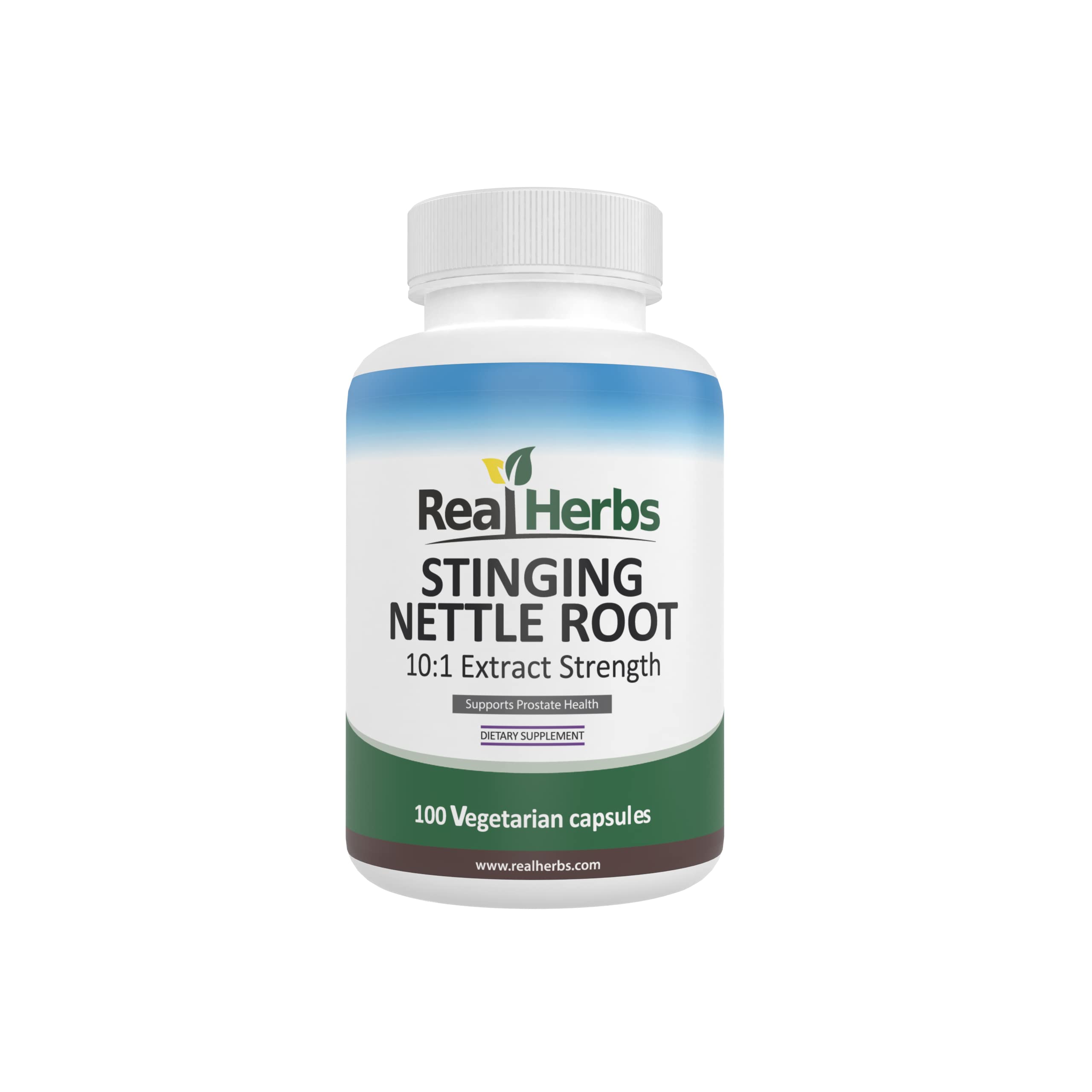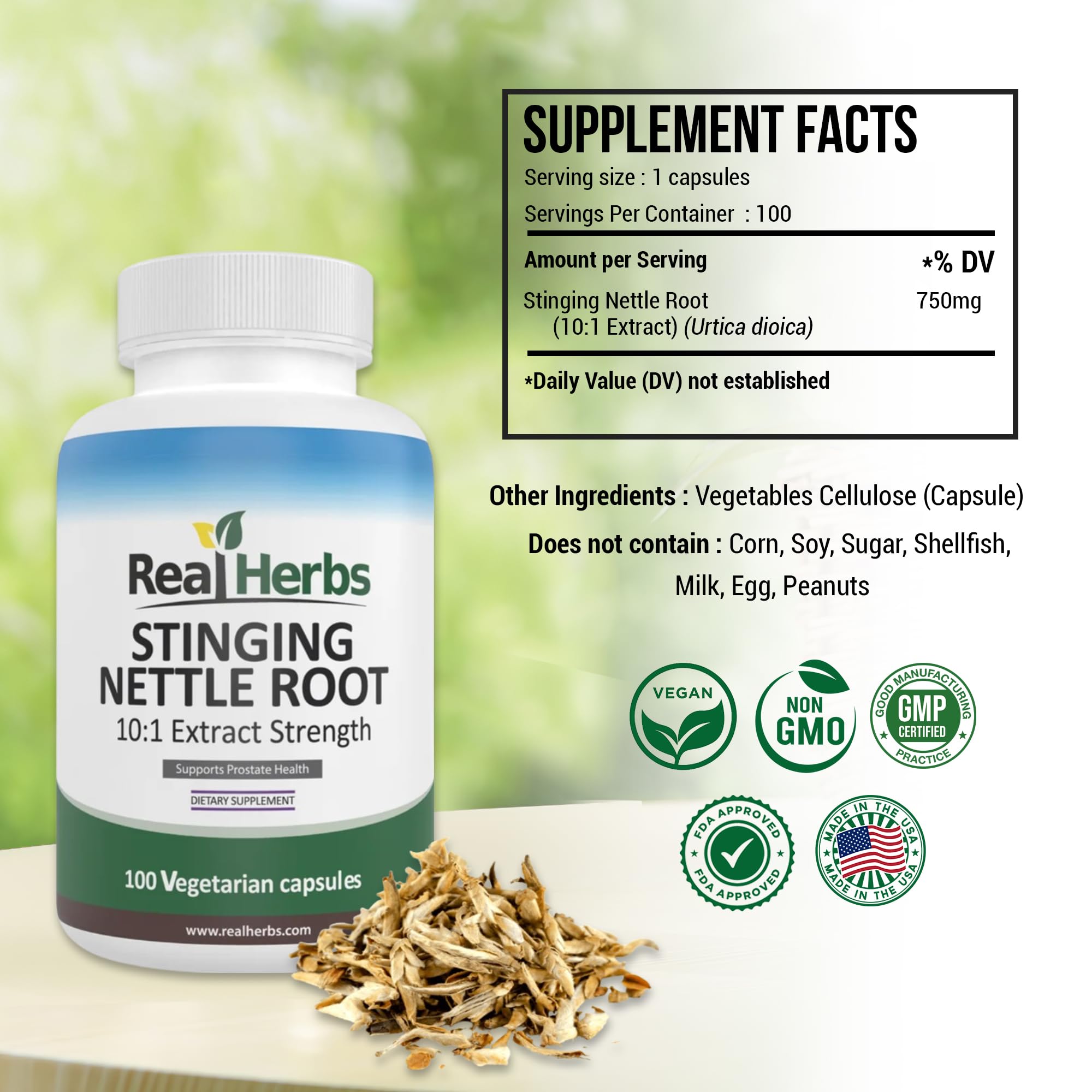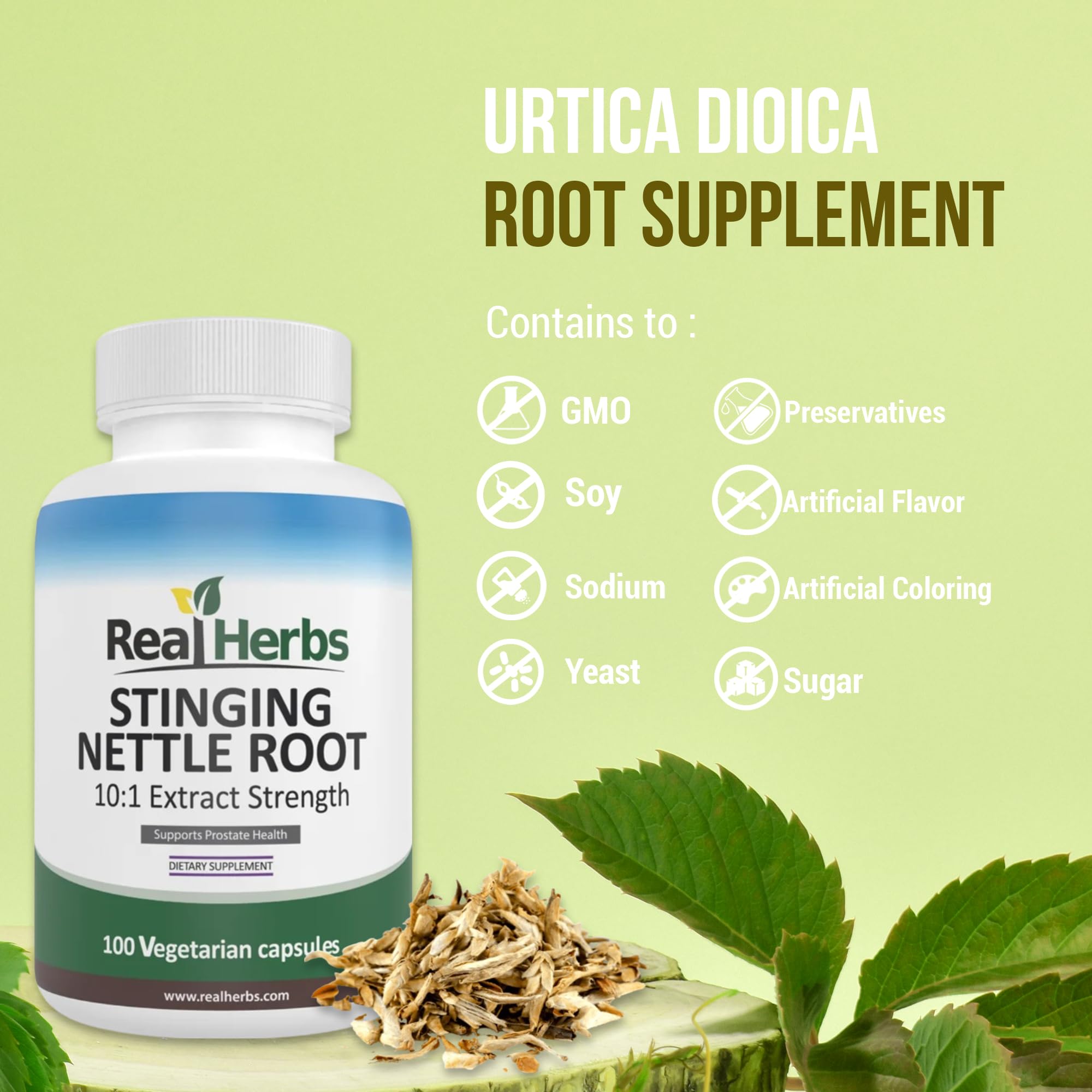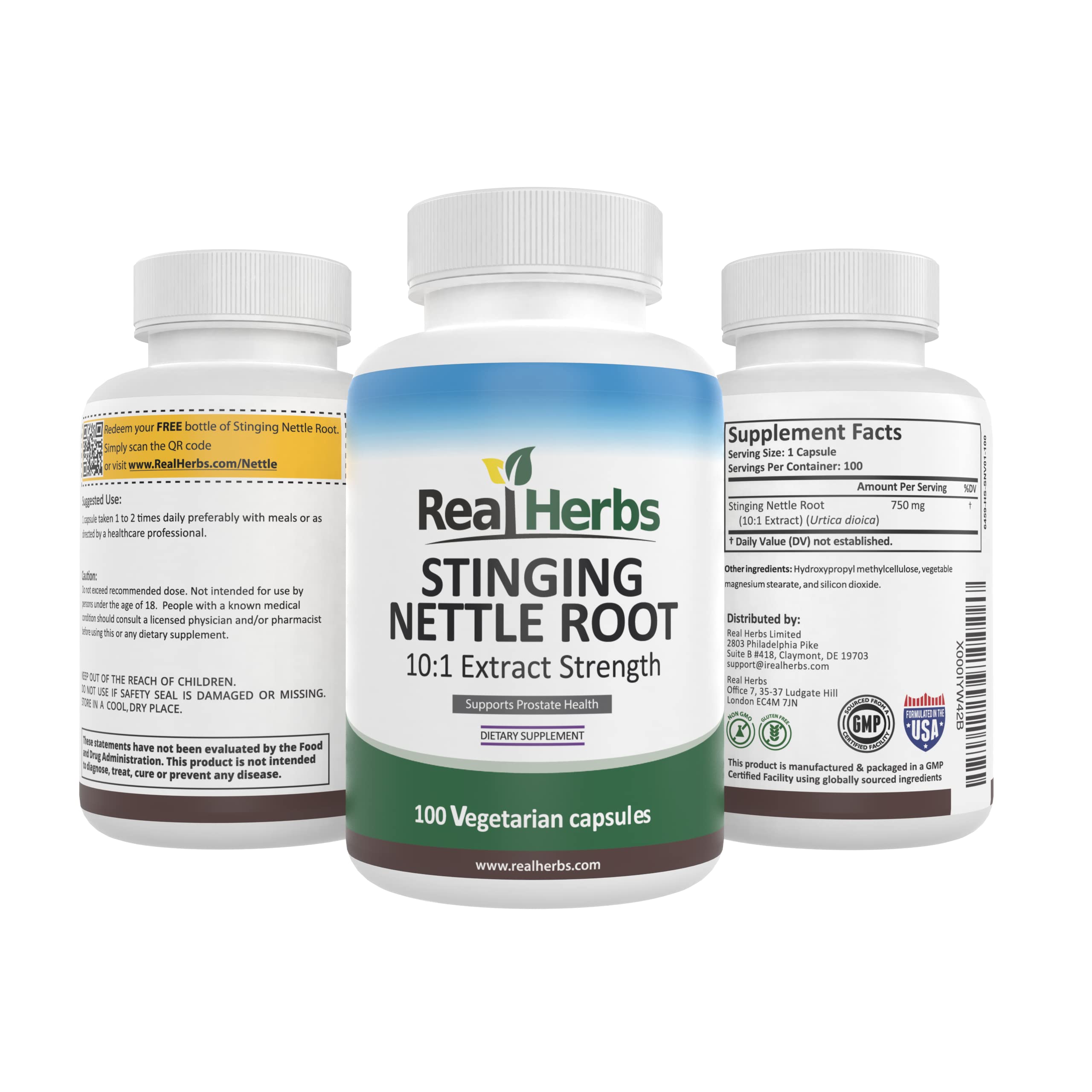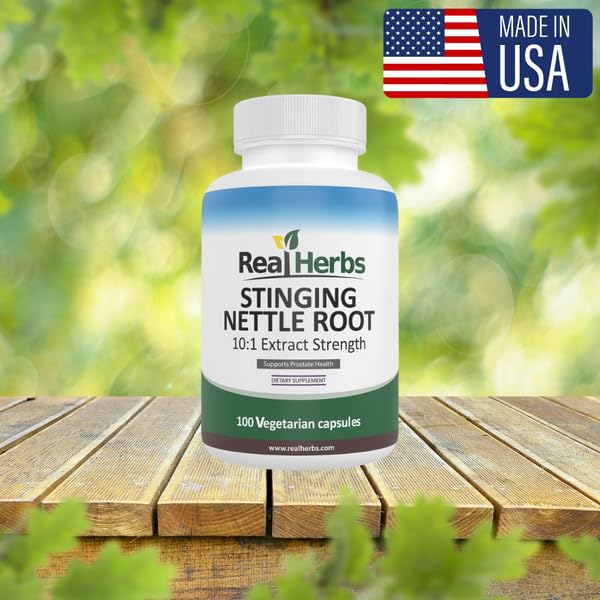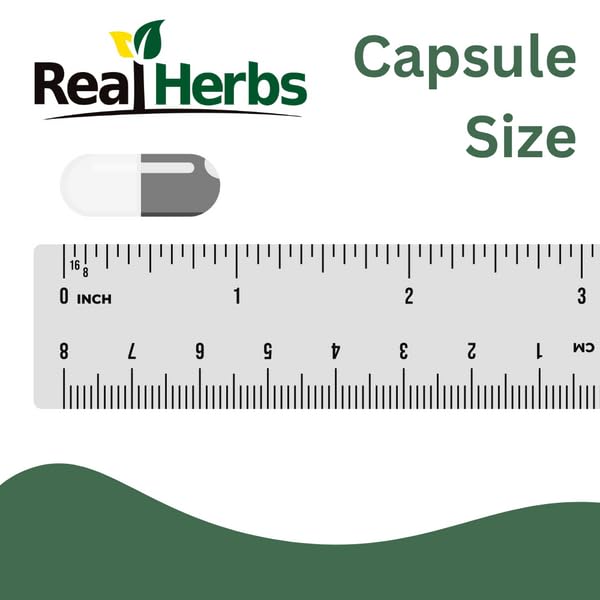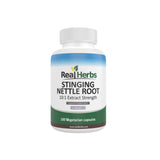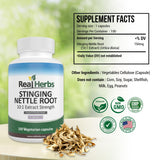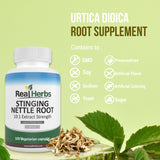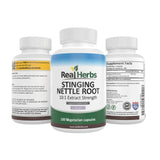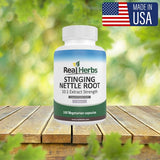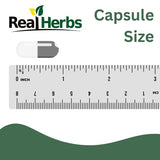A Guide to Stinging Nettle Root Dosage for Maximum Efficacy
A Guide to Stinging Nettle Root Dosage for Maximum Efficacy
Understanding the research-backed doses for prostate health and hormonal support.
The Dosage Challenge: Extracts vs. Raw Herb
Finding the right dosage for any herbal supplement can be challenging, but it's especially important for potent herbs like Stinging Nettle Root (*Urtica dioica*). Research shows that the effectiveness of nettle root extracts, particularly for conditions like Benign Prostatic Hyperplasia (BPH), is highly dependent on the concentration and quality of the extract used [1, 5]. Unlike consuming dried nettle tea, supplemental capsules and tablets contain standardized extracts, meaning they are concentrated to deliver a consistent level of the active compounds (like phytosterols and lignans) [9, 10].
This guide breaks down the typical dosage range and highlights the specific amounts used in successful clinical trials to help you understand how to achieve maximum efficacy safely.

Standard Dosage Range for Stinging Nettle Root Extract
The standard dosage for commercially available nettle root extracts, typically targeting prostate health, generally falls within a narrow range. This range is based on the doses that demonstrated positive results in numerous short- and long-term clinical trials [2, 7, 8].
- Typical Daily Dose (Dry Extract): 300 mg to 600 mg of a standardized dry root extract, taken once or twice daily.
- Forms: This usually comes in the form of capsules or tablets.
- Duration: Most studies that show significant relief from BPH symptoms required continuous use for a minimum of 6 to 12 months [2, 8].
Dosages Used in Key BPH Clinical Trials
The most reliable data on nettle root dosage comes from randomized, double-blind, placebo-controlled trials (RCTs) focusing on BPH and its associated urinary symptoms. These trials used very specific, concentrated doses:
| Study Focus | Dosage Used in Trial | Format & Duration | Key Finding |
|---|---|---|---|
| Safarinejad, 2005 (RCT) [7] | 360 mg per day (120 mg three times daily) | Dry extract over 6 months (crossover design) | Significantly improved urinary symptoms (IPSS) and quality of life compared to placebo. |
| Ghorbanibirgani, 2013 (RCT) [4] | 540 mg per day (180 mg thrice daily) | Dry extract in 100 patients over 8 weeks | Significantly reduced IPSS score compared to placebo, confirming symptomatic relief. |
| Schneider & Rübben, 2004 (Long-Term RCT) [2] | 459 mg per day (as Bazoton-uno extract) | Dry extract over 12 months | Demonstrated sustained, long-term improvement of BPH complaints and good tolerability. |
Note on 750 mg: While some commercial products may offer higher single-capsule doses up to 750 mg, the core therapeutic efficacy proven in the most rigorous clinical settings centers around the cumulative 360 mg to 600 mg daily range of a concentrated extract [1, 2]. Higher doses may be used in combination products or teas, but always defer to medical advice and product instructions.
Maximizing Efficacy and Absorption
The effectiveness of nettle root isn't just about the milligrams you consume; it's also about the quality of the extract and how your body absorbs its key compounds, such as lignans and phytosterols [3, 5, 9].
- Choose Standardized Extracts: Look for products clearly labeled as root extracts (not just powdered root) that specify a concentration ratio (e.g., 10:1 or 20:1) or standardization of key components [1]. This ensures potency and reproducibility.
- Consistency is Critical: Due to its mechanism of supporting hormonal balance and anti-inflammatory pathways over time, nettle root must be taken consistently every day. Short-term use (less than 8 weeks) is unlikely to yield significant, measurable results for BPH [8].
- Timing: While studies don't mandate a specific time of day, taking the supplement with food can improve absorption and minimize the potential for mild gastrointestinal upset [10].
Safety and Medical Consultation
Nettle root is generally well-tolerated at clinical doses [10], but high concentrations of its steroidal and lignan components require caution. Never exceed the recommended dosage listed on the product label without consulting a healthcare professional.
🚨 Crucial Warning: If you are treating Benign Prostatic Hyperplasia (BPH), self-diagnosis is dangerous. BPH symptoms overlap with more serious conditions like prostate cancer. Always receive a formal diagnosis from your physician before starting nettle root, and consult your doctor before combining it with any other prostate medications.
Conclusion
Stinging Nettle Root is a powerful, evidence-backed supplement for prostate health, with clinical efficacy consistently demonstrated in the 360 mg to 600 mg daily range of a concentrated extract. By focusing on a quality, standardized extract and committing to long-term, consistent use, you give this potent herb the best chance to maximize its effects on urinary function and overall male health.
Ready to Optimize Your Dosage?
Choose a high-quality, standardized Stinging Nettle Root Extract that aligns with research-backed dosages (360 mg - 600 mg daily) to ensure you achieve maximum therapeutic benefit.
Our Commitment: Real Herbs offers a potent extract sourced and prepared to meet the strict quality standards found effective in clinical trials.
Start your consistent regimen today, backed by our 100-Day Money-Back Guarantee!
"Switching to a consistent 450mg dose made a noticeable difference in my nighttime urination after a few months." - Mark T.
"I appreciate that Real Herbs uses the dose recommended in the clinical studies." - David S.
Disclaimer: The information provided in this article is for educational purposes only and is not intended as medical advice. Always consult with a qualified healthcare professional before starting any new supplement regimen or combining supplements with medications.
Scientific Credibility & Citations
- Chrubasik JE, Roufogalis BD, Wagner H, Chrubasik S. A comprehensive review on the stinging nettle effect and efficacy profiles. Part II: urticae radix. *Phytomedicine*. 2007. PMID: 17509841 (Comprehensive Review, Dose Context)
- Schneider T, Rübben H. [Stinging nettle root extract (Bazoton-uno) in long term treatment of benign prostatic syndrome (BPS). Results of a randomized, double-blind, placebo controlled multicenter study after 12 months]. *Urologe A*. 2004. PMID: 15045190 (Long-Term Dose/Efficacy)
- Hirano T, Homma M, Oka K. Effects of stinging nettle root extracts and their steroidal components on the Na⁺,K⁺-ATPase of the benign prostatic hyperplasia. *Planta Med*. 1994. PMID: 7510891 (Mechanism/Steroidal Components)
- Ghorbanibirgani A, Khalili A, Zamani L. The Efficacy of Stinging Nettle (Urtica Dioica) in Patients with Benign Prostatic Hyperplasia: A Randomized Double-Blind Study in 100 Patients. *Iran Red Cres Med J*. 2013. PMC3589769 (BPH Trial, 540 mg Dose)
- Semwal P, et al. The medicinal chemistry of Urtica dioica L. *PMC*. 2023. PMC10176313 (Review, Phytosterols/Lignans)
- Bhusal KK, Magar SK, et al. Nutritional and pharmacological importance of stinging nettle (Urtica dioica L.): A review. *Heliyon*. 2022. PMC9253158 (General Review/Nutritional Value)
- Safarinejad MR. Urtica dioica for treatment of benign prostatic hyperplasia: a prospective, randomized, double-blind, placebo-controlled, crossover study. *J Herb Pharmacother*. 2005. PMID: 16635963 (BPH Trial, 360 mg Dose)
- Chrubasik JE, Roufogalis BD, Wagner H, Chrubasik S. A comprehensive review on the stinging nettle effect and efficacy. *Phytomedicine*. 2007. PMID: 17493795 (General Efficacy/BPH Duration)
- Tarasevičienė Ž, Vitkauskaitė M, et al. Wild Stinging Nettle (Urtica dioica L.) Leaves and Roots Chemical Composition and Phenols Extraction. *Plants (Basel)*. 2023. PMID: 36679022 (Chemical Composition)
- Devkota HP, Paudel KR, et al. Stinging Nettle (Urtica dioica L.): Nutritional Composition, Bioactive Compounds, and Food Functional Properties. *Molecules*. 2022. PMID: 36014458 (Bioactive Compounds/Safety)

